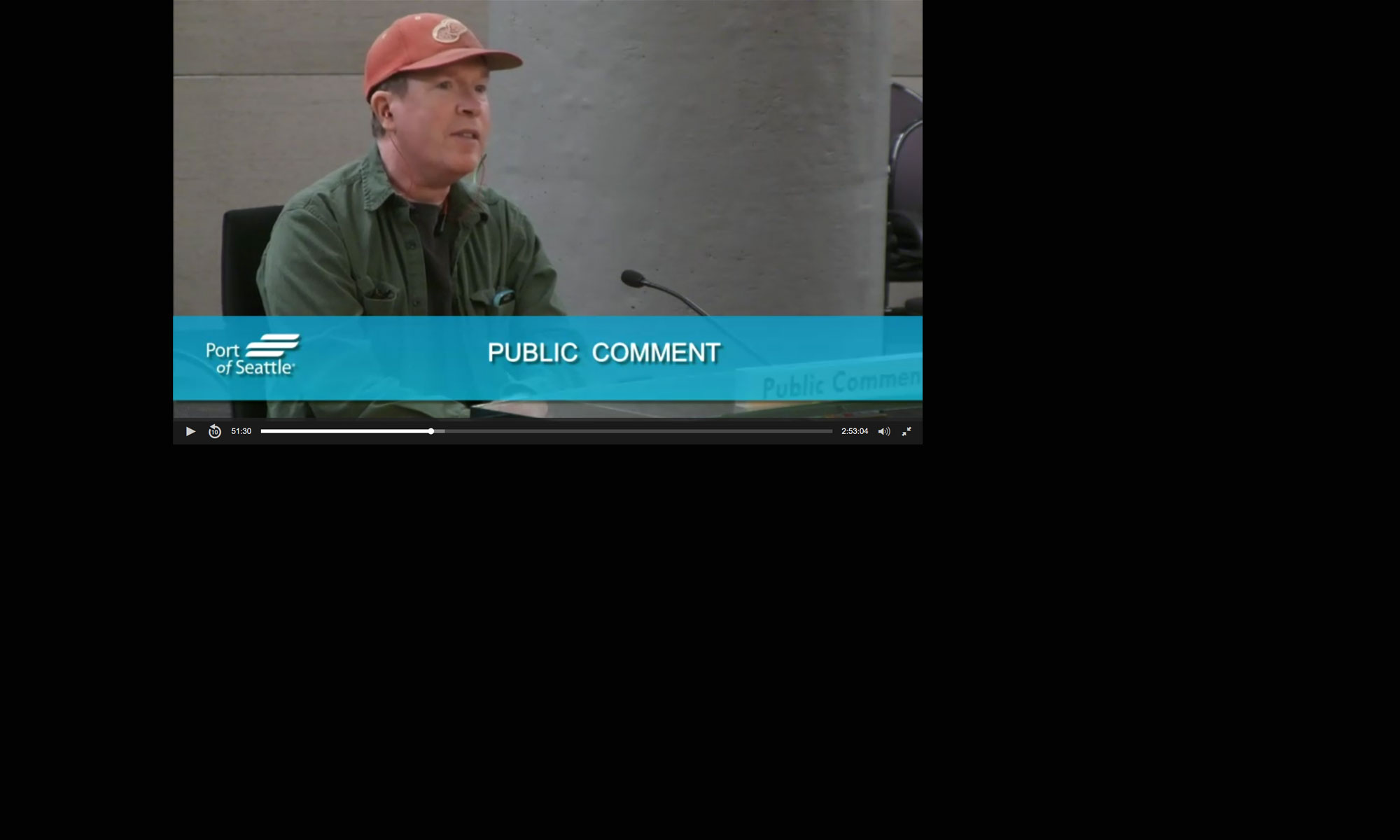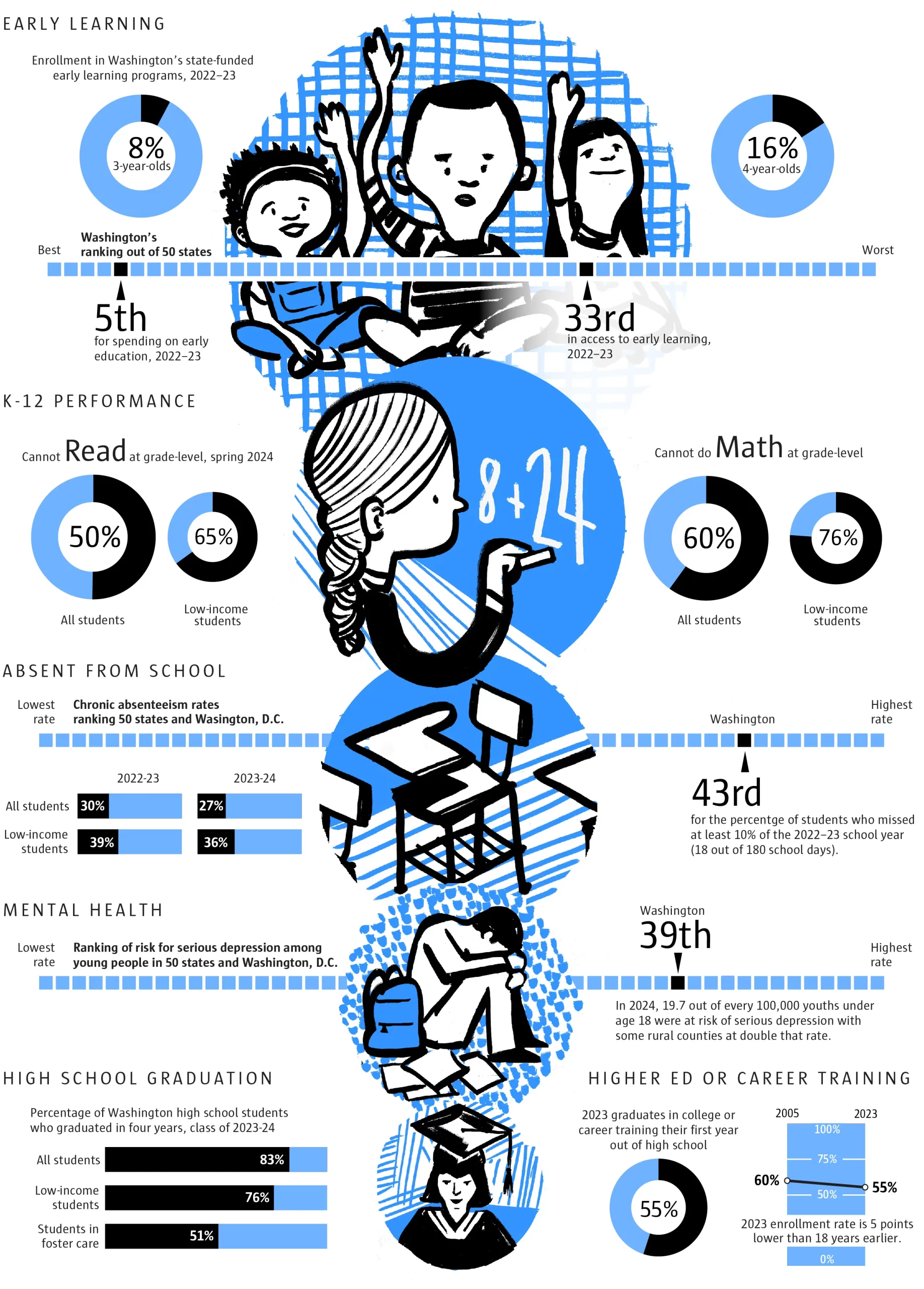The Times editorial board regularly sounds the alarm over steadily declining student performance, growing concerns about youth mental health and lackluster college-going rates.
Taken individually, these editorials land like raindrops in a pond, with a brief splash that quickly disappears and the water looks smooth again. But put all of those data points together, and a different picture emerges: A paltry 24% of preschoolers are enrolled in early learning or transitional kindergarten programs. A majority of public school students are unable to read or do math at grade level. Kids in Washington have a higher-than-average risk for serious, untreated depression. And shockingly low college enrollments (including for career training) have barely budged in 18 years.
The point in presenting this data is not to scold. Rather, it’s to urge lawmakers, advocates and regular folks to take a step back from their usual focus on a single issue, and look at the well-being of Washington’s young people overall. The verdict? Not great.
And we’re talking about average kids — not those facing extreme circumstances like homelessness, foster care, or the legal system.
For a state that talks a good game about its progressive public policy, a place that embraces innovation and the concept of good government, the disparity between these ideals and daily reality for our young people is shameful.
How can it be acceptable that 76% of low-income students are unable to do math at grade level? Please note: 48% of the kids in Washington public schools are low-income. Without a rapid course correction, that pencils out to 531,000 children set up to flounder in an economy powered by jobs in tech and health care.
The whys behind this erosion should not be a mystery. Kids cannot learn when they aren’t in school, and more than a third of low-income students — about 200,000 kids — were chronically absent last year, meaning they missed more than 10% of instruction. This metric has generated little more than a collective shrug. And no, it is not the same in every other state. Washington has some of the highest school absenteeism rates in the country.
Where is the outrage among state and local leaders? More important: Where is the accountability?
Our slide toward failure is not due to a lack of money or ideas. This newspaper has covered successful pilot projects that are improving student outcomes across the state. But without leadership to bring these efforts to all children, they are nothing more than scattershot notes. They never coalesce into a chorus.
One thing about new Gov. Bob Ferguson that already has set him apart, for better or worse, is his stated willingness to seize control. During his campaign last summer, Ferguson said he would dispatch personnel to every high school in the state to walk seniors through filling out their FAFSA financial aid forms. (Research shows that kids who do this paperwork are much more likely to go the next step and enroll.)
OK, governor, make good on that vow. At least it’s a start. Someone’s got to take the lead for Washington’s kids.




